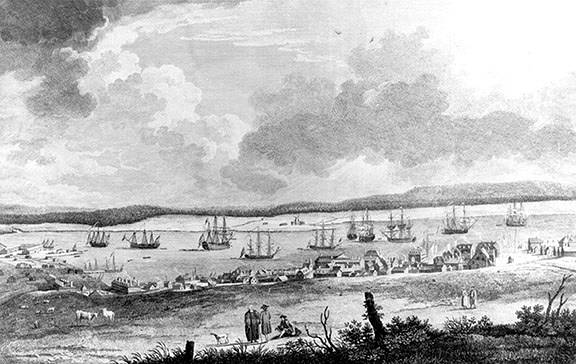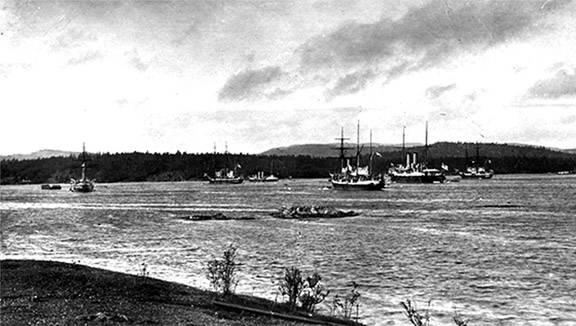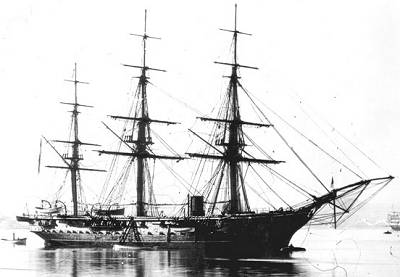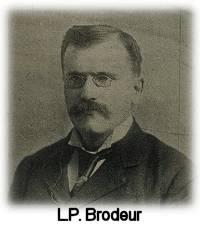Canadian
Navy Timeline
Pre-1910:
Setting the Stage
From colonial times, through confederation, and up until 1910, Canada did not have a Naval Service of its own. Instead it relied upon primarily the Royal Navy to look after the defence of Canadian shores.
Halifax, Nova Scotia
In July 1749, Col. The Honourable Edward Cornwallis arrived at Chebucto Bay with orders to create a settlement and stronghold which was to be the British equivalent of Louisburg. This new settlement was named HALIFAX in honour of the 2nd Earl of Halifax, President of the Board of Trade 1748-61, who had been the most influential sponsor of the new establishment.
 |
|
Halifax
Harbour, 1777.
|
In 1750, Cornwallis’ settlement was made capital of Nova Scotia in place of Annapolis Royal, and Dartmouth was founded on the east side of the harbour. The early beginnings of the Halifax Dockyard were starting to be seen as jetty’s which could accommodate ships of up to 200 tons were constructed.
In the intervening years of 1750 through 1950, Halifax played a leading role in five wars during its first two hundred years: the Seven Years’ War, the War of the American Revolution, the War of 1812, World War I and World War II.
Esquimalt,
British Columbia
In 1843, the Hudson’s Bay Company founded Fort Camosun, on the site of present day Victoria, BC. Three years later, in 1846, HMS PANDORA began a survey of Victoria and Esquimalt harbours for possible use by ships of the RN.
In July 1848, HM frigate CONSTANCE used Esquimalt harbour as an anchorage, the first RN vessel to do so. Esquimalt is the Indian name meaning "a place gradually shoaling" and in the very early days, was pronounced “Is-whoy-maith”.
In 1851, coal was discovered further up on Vancouver Island, and a coal mine was opened in Nanaimo to supply ships at Esquimalt.
Four years later, in 1855, Britain began to use Esquimalt as base of operations in response to the Crimean War. This establishment included the building of a Naval Hospital.
 |
|
Esquimalt
Harbour, 1893.
|
In 1856, Esquimalt was officially established as a Naval Depot for the Pacific squadrons of the Royal Navy.
Within 4 years, in 1860, lights would be placed at entrance to the harbour and on Race Rocks.
In 1862, Esquimalt became headquarters of the Royal Navy Pacific Station, and would, by 1865, become a permanent naval base. The Admiralty authorized "a small establishment ... for the custody, etc, of stores and provisions for HM ships in the north Pacific."
Beginnings of a Navy
Canada entered into Confederation in 1867. The first Federal Defence Act, known as the Militia Act of 1868, effectively created an Army the year after Confederation.
In 1879, the officer commanding the Canadian Militia suggested that a naval reserve be created because of the country’ s considerable coastline. It was at this time that Canada started to consider it's capability for naval defence.
 |
|
HMS
CHARYBDIS, Royal Navy corvette.
|
On the 8th of October 1880, the Governor General of Canada requested that the Admiralty supply a vessel for training of the naval reserves. The Admiralty offered HMS CHARYBDYS, a corvette interestingly enough. Though the Canadian High Commissioner reported her suitable for training, her worn out boilers would not allow for a winter voyage across the Atlantic. When she did finally arrive, she would be require further extensive repair at Canadian Government expense.
By early 1881, HMS CHARYBDIS was officially transferred to the Canadian Government for training and became the first warship that was ever owned by the Dominion Government. However, after arriving in St. John NB, she broke loose in a gale and damaged shipping in the harbour, and on another occasion, two citizens of Saint John, who were trying to go on board broke through a rotten gang-plank and were drowned.
By Aug 1882, CHARYBDIS, found unsuitable for training because of costs and crew size, and was returned to the Royal Navy after being towed to Halifax. Sometime in 1884, CHARABDYS was sold by the RN, presumably for scrap.
In 1886, it was decided that a Halifax dry dock would be built, with priority for its use to be given to ships of the Royal Navy.
Canada's Naval Defence Becomes an Issue
The first colonial conference on defence was held in London from 4 Apr until 9 May, 1887. This meeting was the result of a feeling on the part of the imperial authorities that an unreasonable proportion of the weight of the Empire’ s defence - especially naval defence - rested on the shoulder’s of the taxpayers of the United Kingdom. All self-governing colonies were represented, and they discussed colonial contributions to imperial defence. Britain wanted a navy free to go anywhere, which would require that certain bases and coaling stations should be provided with shore defences. Halifax would remain an Imperial Fortress, but Esquimalt would fall under the proposed cost sharing arrangement.
Canada showed that the problem of naval defence, local or imperial, had no place at all in the minds of her people, and her representatives revealed their unwillingness to commit her to a naval policy of any kind. This was to hold true at conferences for the next 20 years. They also indicated that when the Dominion was ready to undertake expenditures for naval defence, she would undertake to maintain a navy of her own, under her control, which was considered the right of a self-governing Dominion. This year also saw the opening of a new dry dock in Esquimalt. Carved out of solid rock, it meant that ships requiring a dry dock no longer needed to sail to San Francisco.
In 1889, the new Halifax dry dock was completed. It was first used by HMS CANADA, a composite steel, iron and wooden warship of 2,770 tons. The dry-dock would be passed to Halifax Shipyards LTD in 1918. In Esquimalt, Constance Cove was set aside by Canadian Government order as solely for use as a man-of-war anchorage.
The second colonial conference was held in Ottawa, 28 Jun to 9 July, 1894. As defence was not raised, there would be no change in Canadian Naval Policy.
By Feb 1895, Kaiser Wilhelm II had initiated the ‘big navy’ movement in Germany, an event soon followed in 1896 by the opening of the Kiel canal. The canal was a 61 mile-long safe, strategic shortcut between the Baltic and the North Sea. Its completion eliminated the long and hazardous journey around Denmark and all need for a separate Baltic Fleet in defence against Russia. However, it was built when the largest battleships in the world were all less that 12,000 tons. The last German class of pre-Dreadnought battleships of 12,300 tons were the largest that could pass through the canal.
In 1897, during Queen Victoria’s diamond jubilee, the third colonial conference took place. Canada still did not participate in Imperial defence because money, men or ships would fall directly under admiralty control.
Germany is a Formidable Power
In 1898, the German Government would pass series of navy laws in order to formalize the Kaiser’s wishes to develop a powerful navy. This is the start of the naval race between Germany and Britain that will last through to the end of the First World War.
At the colonial conference on defence in 1902, Canada considered the creation of its own navy as opposed to making contributions for Royal Navy. That year would also see Britain form a defensive naval alliance with Japan. This began the process of restructuring Britain’s imperial naval defence policy to meet the threat from German naval building.
In 1904, Britain signed the entente cordialle with France.
On the 28th of Feb 1905, as a result of it’s naval treaty with Japan, the Royal Navy was able to withdraw major naval units from the Pacific to face German threat in home waters. The Japanese naval alliance means Japan was primarily responsible for the safeguarding of British possessions in the Pacific. Only HMS SHEARWATER and the survey ship EGERIA remained in the Pacific at Esquimalt.
On the 2nd of Oct 1905, a new and innovative battleship, HMS DREADNOUGHT was laid down. At beginning of the 20th century, the first modern technological arms race began, and the competition was primarily over battleships. The Royal Navy had the world’s largest navy, but dramatic changes in warship technology appeared to make the Royal Navy vulnerable to its competitors. In an effort to create a fleet of ships that could challenge all other navies, the head of the Royal Navy, an Admiral called “Jackie” Fisher, decided to concentrate on building completely new, even revolutionary, types of battleships, while getting rid of enormous numbers of old warships. This decision was controversial, because the decision to change ship types meant that, essentially, all navies could start from a clean slate and that whoever built ships the fastest could have the biggest fleet. It was a decision that would revolutionize naval construction.
Canada Considers a Navy
 In
Feb 1906, LP Brodeur, who would play a significant part in the creation
of the Canadian Naval Service, was named as minister of Marine and
Fisheries, the department from which the future Naval Service of
Canada would grow.
In
Feb 1906, LP Brodeur, who would play a significant part in the creation
of the Canadian Naval Service, was named as minister of Marine and
Fisheries, the department from which the future Naval Service of
Canada would grow.
By 1 Jan 1907, the response to the changing requirements of imperial naval defence meant that Halifax and Esquimalt were no longer needed by Royal Navy. Halifax was transferred to Dominion of Canada on this date. However, the terms of transfer were not considered appropriate, and renegotiations had to take place.
In 1907, the British government signed an ‘entente’ with Russia. This alliance would serve to make Germany feel even more surrounded and isolated.
The final transfer of the Halifax dockyard to the government of Canada took place in March 1908.
On
the 16th of Mar 1909, the Prime Minister of Great Britain announced
that the growth of the German Navy has place Royal Navy in a critical
situation, and threatens the integrity of the Empire.
